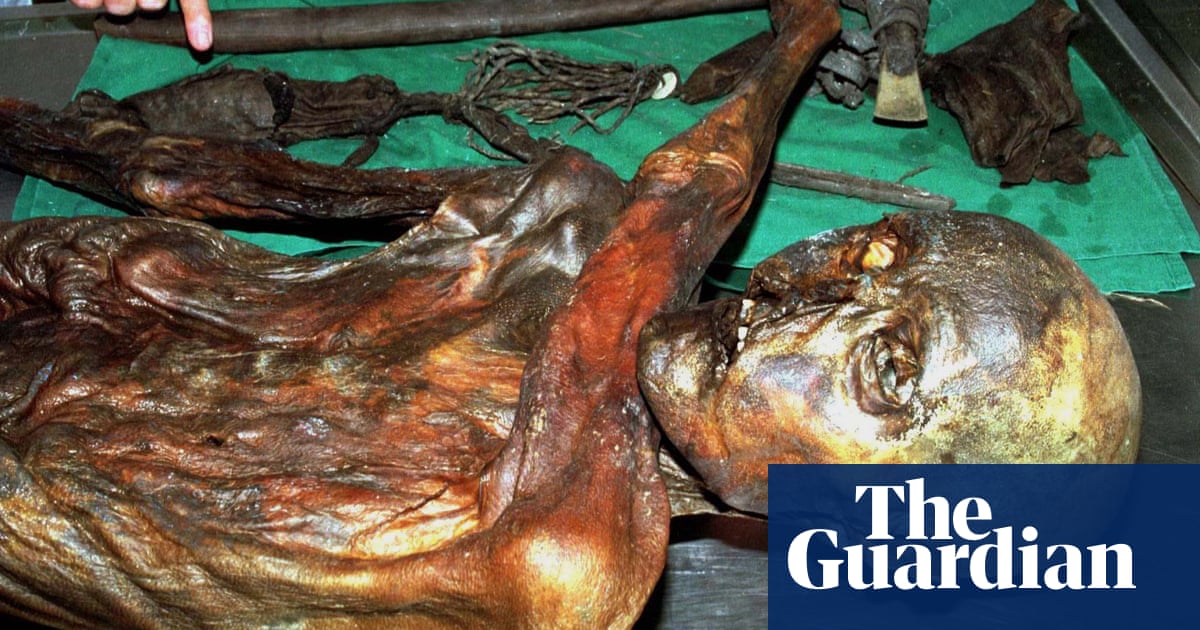
Dark eyes, receding black hair, few or no freckles and a darker skin tone. This is how Ötzi the iceman, the mummified corpse found trapped in the ice of the Italian Alps, would have looked while living.
Researchers who conducted a higher-coverage analysis of the genome to learn more about Ötzi’s genetic history and the mummified man’s physical appearance have found genes associated with male-pattern baldness and darker skin tone.
Albert Zink, the co-author of the study and head of the Eurac Research Institute for Mummy Studies, said this is the darkest skin tone recorded in contemporary European individuals.
“It was previously thought that the mummy’s skin had darkened during its preservation in the ice, but presumably what we see now is actually largely Ötzi’s original skin colour.”
Ötzi’s genomes were first sequenced in 2012. That analysis resulted in traits of a light-skinned, light-eyed hairy male in contrast to the current findings, which have been helped by the development of DNA sequencing technology.
Zink said: “Sequencing technology has advanced since then and allowed researchers to generate a high-coverage genome with more accurate analysis. This allowed them to gain new information and correct earlier findings.”
The study indicates that Ötzi had a dark-skinned complexion during his lifetime, an idea supported by a previous analysis of Ötzi’s skin that found brown melanin granules in the deepest layer of the epidermis. The recent findings also dispute the previously thought ancestry of the iceman.
The 2012 findings reported a genetic affinity between Ötzi and present-day Sardinians and put Ötzi as having Steppe farmer-related ancestry. But the sample from 2012 was contaminated with modern human DNA, which could have led to those results.
The new research uses a different extraction method, which reduced the contamination, and reveals the iceman had a high proportion of genes in common with the early farmers from Anatolia.
Johannes Krause, the co-author of the study based at the Max Planck Institute for Evolutionary Anthropology in Leipzig, said they were surprised not to find traces of eastern European Steppe herders in the analysis, and said the proportion of hunter-gatherer genes in Ötzi’s genome is very low.
“Genetically, his ancestors seem to have arrived directly from Anatolia without mixing with hunter gatherer groups,” Krause said.
The researchers note that Ötzi grew up and lived his life in today’s South Tirol in northern Italy and his ancestors came from Anatolia and began migrating to Europe about 8,000 years ago. Ötzi’s population would have lived in quite an isolated area with relatively low contact to other populations.
Zink said researchers now had a better understanding of his ancestry and the study improved their knowledge of Ötzi’s physical appearance.
“Future reconstructions should take this into account,” he said.
https://news.google.com/rss/articles/CBMiamh0dHBzOi8vd3d3LnRoZWd1YXJkaWFuLmNvbS9zY2llbmNlLzIwMjMvYXVnLzE2L290emktaWNlbWFuLXJlY2VkaW5nLWhhaXJsaW5lLWRhcmstc2tpbi10b25lLXN0dWR5LXJldmVhbHPSAWpodHRwczovL2FtcC50aGVndWFyZGlhbi5jb20vc2NpZW5jZS8yMDIzL2F1Zy8xNi9vdHppLWljZW1hbi1yZWNlZGluZy1oYWlybGluZS1kYXJrLXNraW4tdG9uZS1zdHVkeS1yZXZlYWxz?oc=5
2023-08-17 01:30:00Z
2350756206
Tidak ada komentar:
Posting Komentar